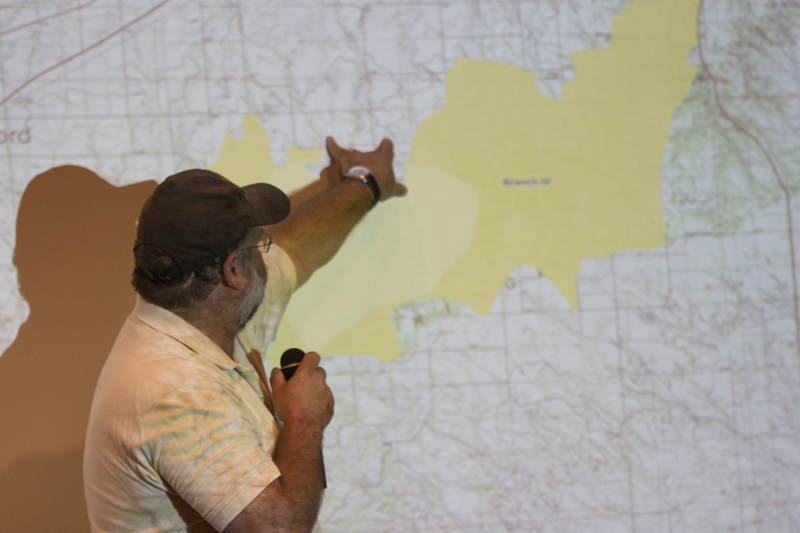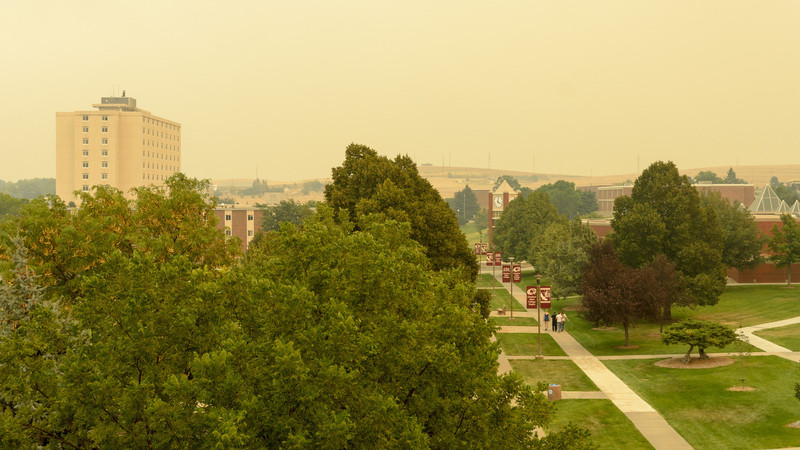CSC ready for classes as firefighters make progress

Chadron State College expects to be back to business as usual Tuesday after northwest Nebraska wildfires prompted an extended Labor Day weekend for students. Classes were called off Thursday and Friday in response to the uncertainty surrounding three wildfires in the region.
“We look forward to starting up again as planned on Tuesday,” said Dr. Randy Rhine, CSC interim president. “Thanks to the hard work of firefighters, other emergency management personnel and countless people working behind the scenes, we will be able to get students back in the classrooms.”
Beth Hermanson, fire information officer for the Type 2 Rocky Mountain Team C, said Saturday night that firefighters had made considerable progress on the two fires in Dawes and Sioux counties, and that lower temperatures and less wind were expected to help the effort Sunday. Jody Fawl of the Nebraska Emergency Management Agency said a containment line had been established around the Wellnitz fire north of Hay Springs. As of Sunday, all highways leading into Chadron were open.
“We are feeling very confident now,” Hermanson said. “Our firefighters fought a hard fight last night (Friday) and won.”
While the conditions have greatly improved, officials say conditions are still extremely ripe for fires and that people should take a cautious approach to their activities. They also want people to stay off the county roads, as firefighting efforts are still in progress.
Joe Lowe, the incident commander for the team, showed progress on the fires with maps generated from infrared technology during a community meeting Saturday night in the Student Center.
While the Ash Creek Fire’s official containment figure is 47 percent, Lowe expected to see that number increase considerably in the coming hours and days. He said the Douthit Fire north of Crawford had been “stopped.”
Those two fires, known as the Region 23 Complex, scorched 80,555 acres, and more than 60,000 acres have been consumed in the Wellnitz Fire.
The incidents have posed an incredible challenge for the firefighters, with gusty winds, rugged terrain, and extreme dryness making conditions ripe for disaster. One official noted that the Ash Creek fire moved 20 miles in 2 ½ days. Lowe said that five homes had been lost in the fires. Hundreds of rural residents have been evacuated from their homes.
The burning of ponderosa pine trees caused flames as high as 150 feet. At one point, the fire moved eight miles in 14 minutes. In addition to ground efforts, the firefighting was aided by water dumps from helicopters and several passes by a DC-10 jet airliner carrying 12,000 gallons of retardant.
Darren Clabo, team meteorologist, spoke about the region’s extreme drought and noted that temperatures have been 5 to 8 degrees above average since the beginning of the year. Lowe, who has more than 3 ½ decades of firefighting experience, said fire behavior throughout the United States has been worse this year than any other he’s witnessed.
Perhaps the tensest moment for Chadron residents occurred Friday afternoon when high winds pushed the fire toward the city on the west side of U.S. Highway 385. The fire nearly jumped 385 near Chadron State Park, which would have given it a direct path to Chadron through the burn area of the 2006 Spotted Tail Fire. The college and residents south of 10th Street stood on the brink of evacuation.
“That was our make-it-or-break-it moment,” Lowe said, commending the work of those who held the line.
Later, in the overnight hours, the fire made a run toward Whitney and was stopped just prior to reaching the village.
Despite the monumental losses of property and vegetation, Lowe expects many trees to survive the fires.
“You’re still going to have a forest,” he said.
Northwest Nebraska’s community spirit and its local fire crews were lauded by the officials who spoke Saturday night. To make his point, Lowe showed a photo of a handwritten sign on a Crawford business that said “Closed for firefighting.”
Officials also thanked CSC for its cooperation during the fires of this past week and earlier this summer.
CSC administrators have maintained close contact with emergency personnel throughout fires. The CSC Nelson Physical Activity Center served as shelter for about 250 students of the Pine Ridge Job Corps Center who had been evacuated. In late July, a Type 2 incident management team took up headquarters on the CSC campus.
Category: Campus Announcements, Campus News


